Screen is flickering when you’re playing games? Not to worry. You can fix it easily with the step-by-step guide in this post, apply to Windows 10 & 8.
Try the below five methods one by one until you find the one that works for you.
Method 1: Use a higher screen refresh rate
Method 2: Roll back graphics card driver
Method 3: Update graphics card drivers
Method 4: Disable fullscreen optimization in Windows 10
Method 5: Turn off FreeSync
Method 1: Use a higher screen refresh rate
Screen refresh rate means how many times the display updates with new images per second, and it’s written out in Hertz (HZ). For example, 60HZ means the display updates with new images 60 times per second.
A low refresh rate can cause screen flickering in games. That being said, to fix screen flickering issues in games, you can try using a higher screen refresh rate.
Follow these steps to select a higher screen refresh rate:
1) Right-click on desktop and select Display settings.
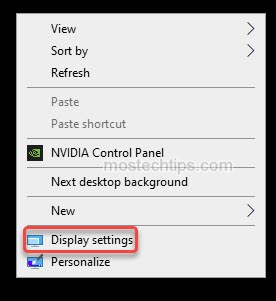
2) Click on Advanced display settings.

3) Under Related settings, click on Display adapter properties.
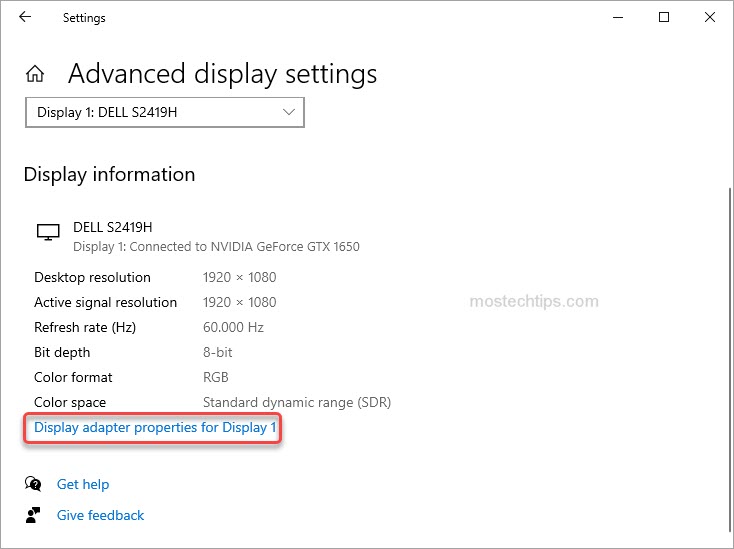
4) In the Monitor tab, then in the Monitor Settings section, select a refresh rate that’s higher than the current refresh rate you’re using.
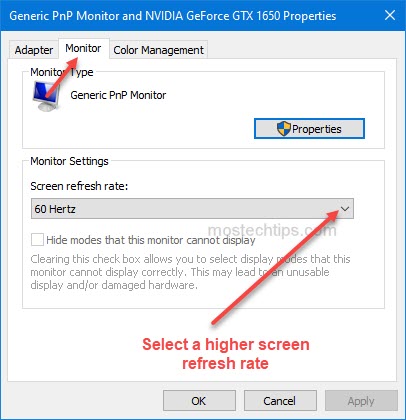
Note: In Windows, the refresh rate is set as 60HZ by default, so you should try a screen refresh rate higher than 60HZ. The maximum refresh rate you can use depends on your monitor. If you can’t select a higher refresh rate than 60HZ, this method doesn’t work for you. Just try other methods.
5) Click Apply -> OK to save the changes.
6) Restart your computer and check to see if the screen is still flickering when you’re playing games.
Method 2: Roll back graphics card driver
The graphics card could be updated via Windows Update, and you didn’t even notice it. In this case, it may cause screen flickering issues in games. To fix the problem, you can try rolling back the graphics card driver to the older version.
To do so:
1) On your keyboard, press Win+R (the Windows logo key and the R key) at the same time to invoke the Run box.
2) Type “devmgmt.msc” into the Run box and click OK to open the Device Manager.
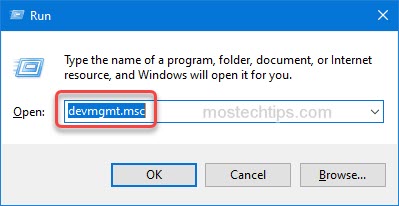
3) Expand the category “Display adapters”, and double-click on the graphics card device.
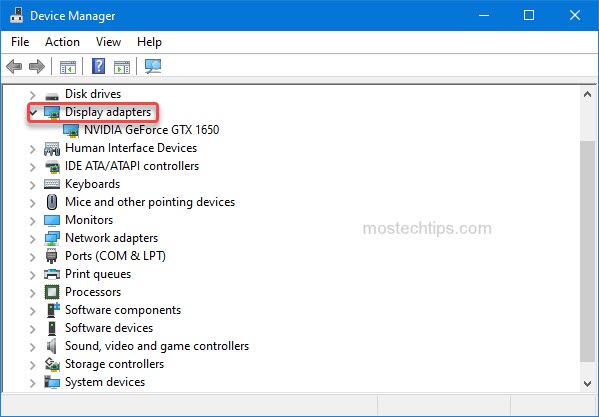
4) Click on the Driver tab, and then click on the Roll Back Driver button to roll back the driver.

Note: If the Roll Back Driver button is grayed out, it means you don’t have a newer driver installed, so you can’t roll back the driver to the older version. So this method doesn’t work for you. Just skip and try other methods.
5) Once rolling back the driver, click OK to save the changes.
6) Restart your computer and check to see if the screen flickering issue persists.
Method 3: Update graphics card drivers
Outdated graphics card drivers can also cause screen flickering in games, so updating graphics card drivers may resolve the problem.
You can manually update the drivers if you want. Just head to the PC manufacturer’s website or the device manufacturer’s website to download the latest drivers corresponding to the Windows version you have.
If you don’t have the time and computer skills to update the drivers manually, you can do it automatically with Driver Easy.
With Driver Easy, to download the correct drivers, you don’t need to verify your computer model and your Windows version. You can update drivers with a few clicks even if you don’t have too much computer skills.
1) Download and install Driver Easy Free on your computer.
2) Launch the application and click on Scan Now to detect any problem drivers on your computer, then you’ll see a list of drivers that can be updated.

3) Click the Update button next to the graphics card driver, then the driver will be downloaded automatically. Once download is done, you can install the driver with the step-by-step guide from Driver Easy.
If you use the Pro version, you can click the Update All button to update all drivers automatically. Besides, you’ll get full support and a 30-day money back guarantee.
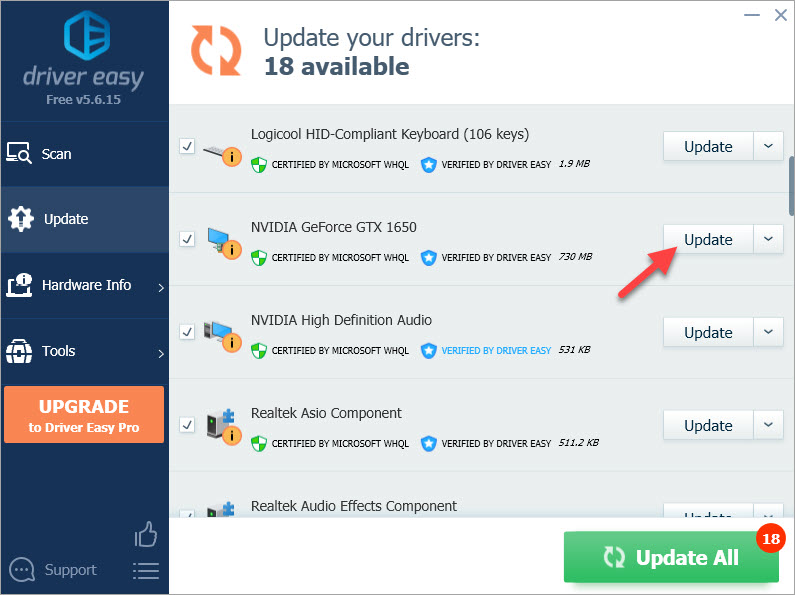
4) After updating the driver, check to see if the error persists.
Method 4: Disable fullscreen optimization in Windows 10
The screen flickering issue can happen in fullscreen mode. If that’s your case, you can disable fullscreen optimizations in the system.
Here’s how to do it:
1) Right-click on the game shortcut and select Properties.
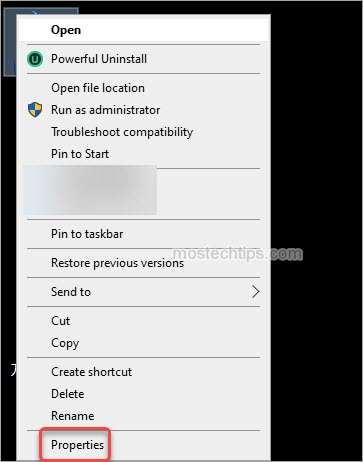
2) Click on the Compatibility tab and tick the box next to Disable fullscreen optimizations.
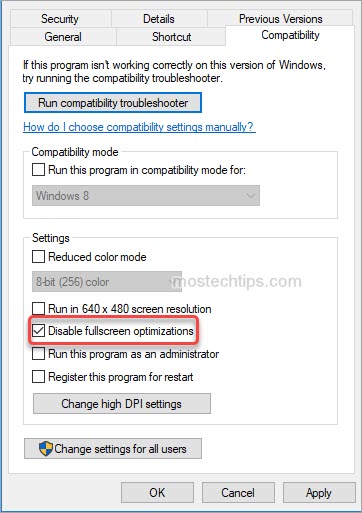
3) Click Apply -> OK to save the changes.
Method 5: Turn off FreeSync
If you’re using a FreeSync monitor, turning off the FreeSync may resolve the problem.
Generally, FreeSync is active on the monitor by default. You can simply turn it off on the monitor side. Press the OSD (On-screen Display menu) button to navigate to the option that allows you to turn off the FreeSync.
Or you can turn it off from the graphics card control panel. The steps to turn FreeSync off depending on the graphics card you’re using. For example, If you’re using an AMD graphics card, you can refer to the steps here to turn FreeSync off.
If you have no idea how to do it, you can contact the computer manufacturer for assistance.
Once the FreeSync is off, the screen flickering issue may be gone.
Above are the methods you can try to fix the screen flickering issues in games. If you have any questions, feel free to drop a comment below. I’ll get back to you ASAP.
